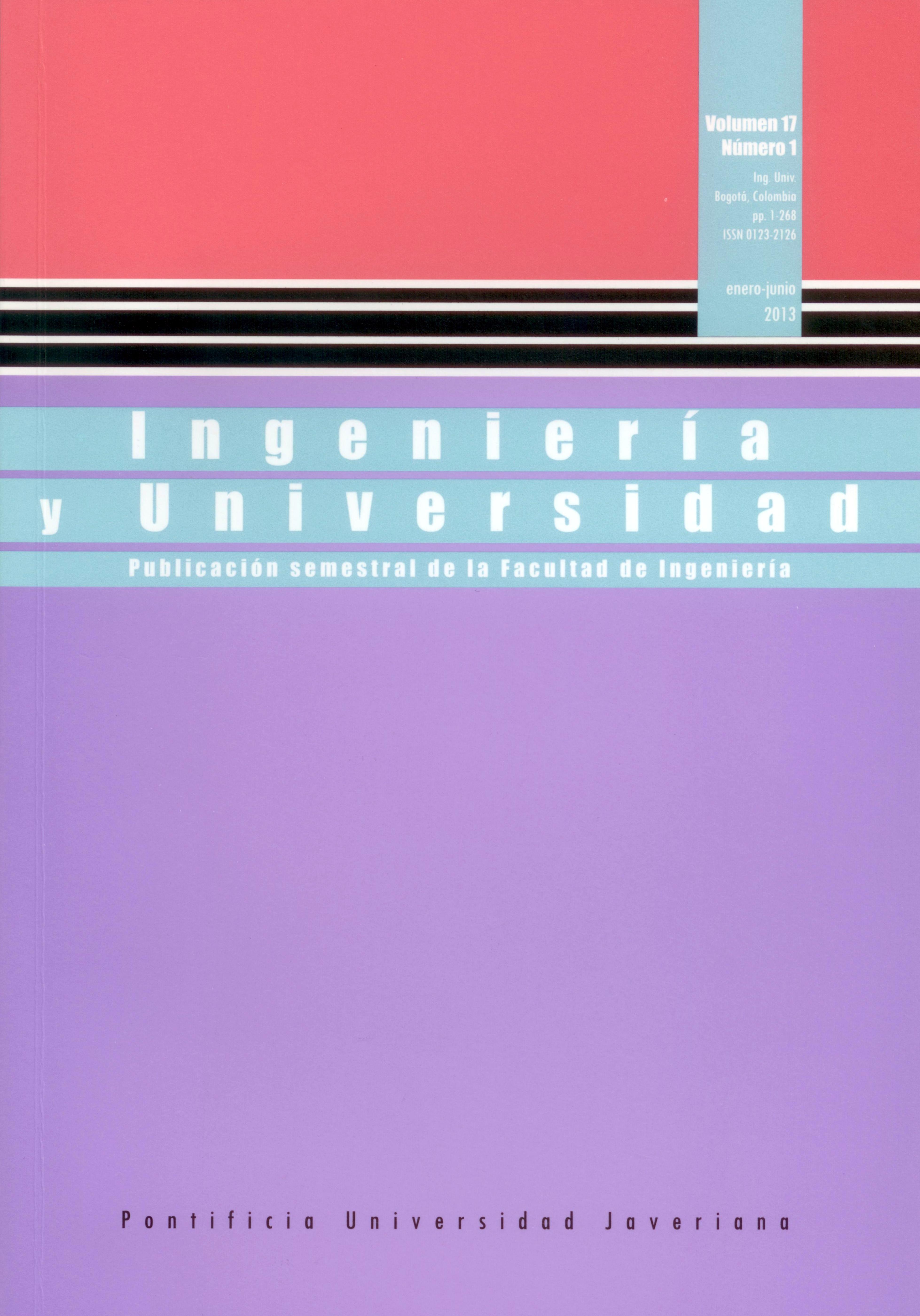Abstract
This paper presents a methodology for identifying a system of interacting tanks that follows a non-linear behavior as a dynamic hybrid system (DHS) based on the method for identifying non-linear systems known as bounded error approach. Having identified this tank system as a DHS, it is represented through state variables to apply a commuted state feedback control law in order to find a multiple Lyapunov function, which would allow us to guarantee the stability of the identified commuted system.
BEMPORAD, A.; FERRARI-TRECATA, G. y MORARI, M. Observability and controllability of piecewise affine and hybrid systems. Proceedings of the 38th IEEE Conference on Decision and Control. 1999, vol. 4, núm. 1, pp. 3966-3971.
BEMPORAD, A. et al. Bounded error approach to piecewise affine system identification. IEEE Transactions On Automatic Control. 2005, vol. 50, núm. 10, pp. 1567-1580.
BENNET, K. P. y MANGASARIAN, O. L. Robust linear programming discrimination of two linearly inseparable sets. Optimization Methods and Software. 1995, vol. 1, núm. 1, pp. 23-34.
CORTÉS, C. y VAPNIK, V. Support-vector networks. 1st ed. Berlin: Springer-Verlag, 1995.
DAAFOUZ, J.; RIEDINGER, P. e IUNG, C. Stability analysis and control synthesis for switched systems: A switched Lyapunov function approach. IEEE Transactions on Automatic Control. 2002, vol. 47, núm. 11, pp. 1883-1887.
DUDA, R.; HART, O. y STORK, D. Pattern classification. 2nd ed. New York: Wiley-Interscience, 2000.
DUQUE, M. et al. Control de sistemas híbridos usando el acercamiento MLD. Parte I: modelamiento. Congreso Nacional de la Asociación Colombiana de Automática, 2004.
FERRARI-TRECATA, G.; BEMPORAD, A. y MORARI, M. Observability and controllability of piecewise affine and hybrid systems. Proceedings of the 38th IEEE Conference on Decision and Control. 1999, vol. 4, núm. 1, pp. 3966-3971.
FLIELLER, D.; RIEDINGER, P. y LOUIS, J.P. Computation and stability of limit cycles in hybrid systems. Nonlinear Analysis. 2006, vol. 64, núm. 2, pp. 352-367.
GOEBEL, R.; SANFELICE, R. y TEEL, A. Hybrid dynamical systems. IEEE Control Systems Magazine. 2009, vol. 29, núm. 2, pp. 28-93.
GROSSMAN, R. L. et al. Hybrid systems. Berlin: Springer-Verlag, 1993.
HEEMELS, M.; SCHUTTER, B. y BEMPORAD, A. Equivalence of hybrid dynamical models. Automatica. 2001, vol. 37, núm. 7, pp. 1085-1091.
HESPANHA, J. P. y MORSE, A. S. Stability of switched systems with average dwell time. Proceedings of the 38th IEEE Conference on Decision and Control. 1999, vol. 3, núm. 1, pp. 2655-2660.
LIBERZON, D. Switching in systems and control. 1st ed. Boston: Birkhäuser, 2003.
MCGRATH, B. et al. Predictive control of a flying capacitor converter. American Control Conference. 2007, vol. 1, pp. 3763-3768.
PATINO, D. Control of limit cycles in hybrid dynamical systems: An introduction to cyclic switched systems. Application to power converters. Berlin: LAP Publishing, 2009.
VILLA, J. L. et al. Modelamiento y control de sistemas híbridos. Revista de Ingeniería. 2004, vol. 19, núm. 1, pp. 177-182.
ZACCARIAN, L. y TEEL, A. The L2 (l2) Bumpless transfer problem for linear plants: Its definition and solution. Automatica. 2005, vol. 41, núm. 7, pp. 1273-1280.
This journal is registered under a Creative Commons Attribution 4.0 International Public License. Thus, this work may be reproduced, distributed, and publicly shared in digital format, as long as the names of the authors and Pontificia Universidad Javeriana are acknowledged. Others are allowed to quote, adapt, transform, auto-archive, republish, and create based on this material, for any purpose (even commercial ones), provided the authorship is duly acknowledged, a link to the original work is provided, and it is specified if changes have been made. Pontificia Universidad Javeriana does not hold the rights of published works and the authors are solely responsible for the contents of their works; they keep the moral, intellectual, privacy, and publicity rights.
Approving the intervention of the work (review, copy-editing, translation, layout) and the following outreach, are granted through an use license and not through an assignment of rights. This means the journal and Pontificia Universidad Javeriana cannot be held responsible for any ethical malpractice by the authors. As a consequence of the protection granted by the use license, the journal is not required to publish recantations or modify information already published, unless the errata stems from the editorial management process. Publishing contents in this journal does not generate royalties for contributors.



